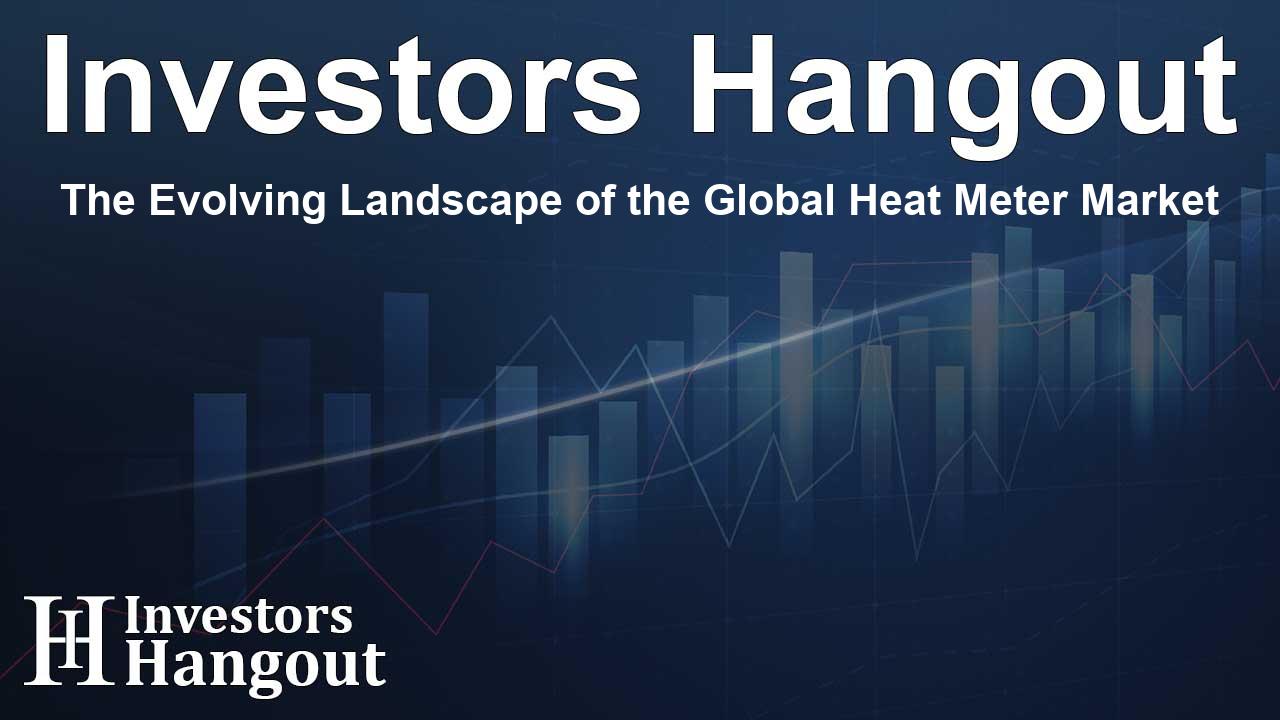The Evolving Landscape of the Global Heat Meter Market

Global Heat Meter Market Overview
The global heat meter market is on a trajectory to reach the remarkable valuation of over USD 3,294.39 million by 2033. This growth signals a robust Compound Annual Growth Rate (CAGR) of 6.95% from the previous year, with expectations set for 2025 to 2033. As we delve deeper into the realm of thermal energy consumption, heat meters emerge as indispensable tools across various sectors, including industrial, commercial, and residential applications.
Significance of Heat Meters
Heat meters play a crucial role in accurately measuring thermal energy expenses, a necessity driven by evolving energy billing requirements and the incessant demand for precise monitoring. Within Europe, a notable group of manufacturers emphasizes mechanical heat meters primarily designed for apartments. Companies like Kamstrup A/S and Landis+Gyr AG stand out in providing reliable solutions for multi-story residential buildings. Conversely, North American manufacturers are advancing their technology with ultrasonic meters, which feature sophisticated sensor technology.
Technological Advancements in Heat Meters
The market is witnessing an elevation in specialized calibration protocols, amplifying its importance in modern infrastructure. Various testing facilities have initiated updated metering guidelines to enhance device reliability and accuracy. Research collaborations among educational and professional institutions have intensified, driving innovative testing techniques for fluid sensor modules and validating new threshold detection methods for different types of meters.
Market Trends and Future Drivers
The heat meter industry is evolving with rising trends and challenges. For instance, the increased focus on energy-efficient solutions in district heating networks, along with growing government support for smart metering implementations, showcases a proactive approach to sustainable energy management. Moreover, the integration of IoT-enabled meters allows real-time consumption monitoring, setting a new standard for efficiency.
Key Market Players
Several industry leaders are pivotal in driving technological advancements in the heat meter landscape. Prominent companies, including Siemens AG, Itron Inc., and Danfoss A/S, actively participate in this competitive market, offering innovative products that cater to various consumer needs. Their continuous efforts ensure that end users benefit from precise measurements, leading to transparent billing practices.
Challenges and Opportunities Ahead
While the heat meter market thrives, it faces challenges that must be addressed. The necessity for interoperability among diverse manufacturers and the mitigation of cybersecurity risks in connected meter infrastructures are paramount. However, these obstacles also present opportunities for innovation, as companies strive to achieve standardization within the industry.
Regional Growth Insights
The Asia Pacific region is poised for rapid growth in heat meter demand, primarily fueled by substantial real estate development and an increasing interest in efficient billing systems. In countries like China and India, government initiatives aim to standardize thermal billing across urban and suburban settings, reflecting a robust commitment to energy efficiency.
Conclusion
As we project toward the future, the global heat meter market is an intricate tapestry woven from technological advancements, regulatory support, and customer demand. With major players committed to innovation and addressing the challenges ahead, the probability of reaching a market valuation exceeding USD 3.29 billion seems more achievable than ever. By integrating seamless technology and ensuring reliable operation, the industry is primed for sustained growth.
Frequently Asked Questions
1. What is the expected market value of the heat meter market by 2033?
The heat meter market is projected to exceed USD 3,294.39 million by 2033.
2. What factors are driving the growth in the heat meter sector?
Key factors include the demand for energy-efficient solutions and the integration of IoT technology for real-time monitoring.
3. Who are the major players in the heat meter market?
Major players include Siemens AG, Kamstrup A/S, and Landis+Gyr Group AG.
4. What challenges does the heat meter market currently face?
The market faces challenges such as interoperability among different manufacturers and cybersecurity risks in connected systems.
5. Why is the Asia Pacific region important for the heat meter market?
The Asia Pacific region is rapidly expanding due to real estate growth and strong government initiatives promoting energy-efficient practices.
About The Author
Contact Lucas Young privately here. Or send an email with ATTN: Lucas Young as the subject to contact@investorshangout.com.
About Investors Hangout
Investors Hangout is a leading online stock forum for financial discussion and learning, offering a wide range of free tools and resources. It draws in traders of all levels, who exchange market knowledge, investigate trading tactics, and keep an eye on industry developments in real time. Featuring financial articles, stock message boards, quotes, charts, company profiles, and live news updates. Through cooperative learning and a wealth of informational resources, it helps users from novices creating their first portfolios to experts honing their techniques. Join Investors Hangout today: https://investorshangout.com/
The content of this article is based on factual, publicly available information and does not represent legal, financial, or investment advice. Investors Hangout does not offer financial advice, and the author is not a licensed financial advisor. Consult a qualified advisor before making any financial or investment decisions based on this article. This article should not be considered advice to purchase, sell, or hold any securities or other investments. If any of the material provided here is inaccurate, please contact us for corrections.
